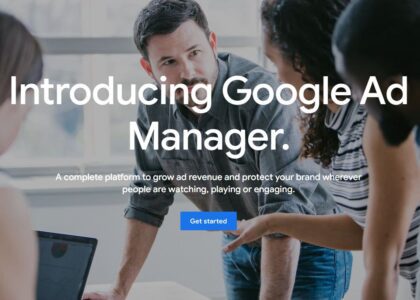Landing Page for PPC is a webpage that is displayed to people who are searching for a keyword. It is similar to an advertisement, but it does not contain any product or service. Landing pages are divided into two primary types: conversion and informational. Conversion landing pages are used to sell items or services, while informational landing pages are used to educate the user about a specific topic. Below are the points that you need to consider before creating landing page.
Mobile-friendly layout: Before you start designing, it’s important to know what the users of your app are using. The percentage of mobile users is growing quickly. According to Statista, in 2021, 80% of the world’s population was using a mobile phone and by 2020, this number will be 91%. This means that most companies need to redesign their websites and apps to be responsive or else they risk losing out on potential customers and sales. Responsive design is a way of creating websites or apps that automatically adjust their width and height based on the size of your browser window. It makes it easier for visitors to navigate your website or app without having to scroll horizontally across long pages or vertically on small screens (such as smartphones). If you have an existing website that isn’t mobile-friendly, then it’s time for an upgrade! Here are some tips for creating a mobile-friendly layout for ppc landing page:
Match your landing page to your ad: The landing page is the page that people click on when they arrive at your website. It’s the one that tells them what to do next and where to go. The ad is the first impression of your brand, so it has a huge impact on whether or not people click on it. If your ad copy is bad, then you’re setting yourself up for failure by not matching it with your landing page. Your landing page should be as relevant as possible to the people reading that ad. This means that if you’re selling lawn mowers, then your landing page needs to match exactly what you’re telling people about your lawn mower. In other words, if you have an ad for a lawn mower, then make sure that your landing page is also selling lawn mowers!
Keep it short and sweet: A landing page is the last thing you see before someone jumps into your checkout process. It’s the first thing that greets visitors when they land on your site, and it’s also where you try to convince them to take action. You can use this space to briefly describe what your product or service is all about, or what value it delivers. You can use this space to add in a coupon or discount code, or even a social proof element like a testimonial from someone who has bought from you before. But keep in mind that people only spend time looking at one page of your website before they decide whether or not they will stay or leave. They may go through multiple pages, but if they don’t like what they see on any particular page, then they will probably click away right away and never return.
Speed Counts: Your website is a reflection of your business. It’s the first impression that people have of you and your business. This is why it’s important to have a website that’s easy to navigate, has relevant content, and is optimized for speed. Speed Counts landing page is a WordPress landing page template that will help you reach out to potential customers faster than ever before. It also gives you the opportunity to boost your conversion rate by 7% and increase sales by 25%.
Easy to navigate: The landing page is one of the most important pages on your website. It’s where the visitor first sees and interacts with your brand. The goal of a landing page is to convert visitors into customers. A well-designed landing page should be easy to navigate, so that users can quickly find what they are looking for, get in touch with you, and close the deal.
Call to action is visible and clear: The call to action is visible and clear in landing page. It is the most important element on the landing page as it gets customers to take action. The call to action should be visible, understandable and clear so that people can easily understand what you want them to do. The CTA usually appears at the bottom of a website or blog post, but it can also appear on the top of your website if you want the visitor to click on something else than your main call-to-action button.
Conclusion: Before creating or optimizing a landing page, be sure you’ve considered all of these factors.




